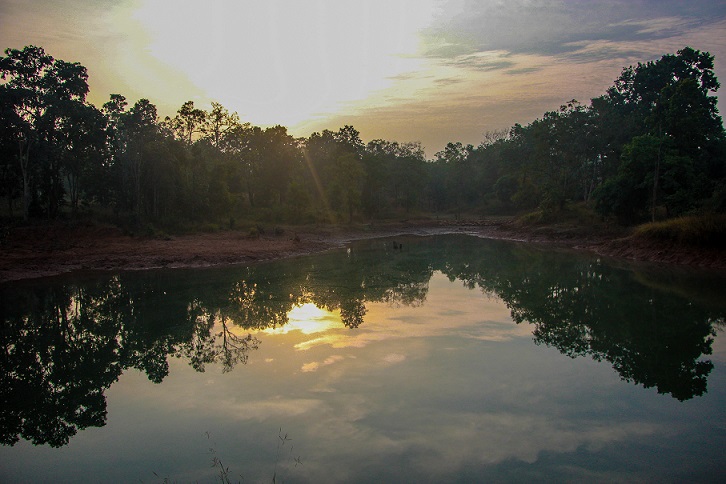In Forestry terminology, the forests of BTR are broadly classified into the following types:
- Moist Peninsular Low-level Sal Forest
- West Gangetic Moist Mixed Deciduous Forest
- Northern Dry Mixed Deciduous- Forest
- Dry Deciduous Scrub Forest
However, for the general understanding purpose, the forest of Sanjay may be termed as ‘Moist Mixed Deciduous Forest with predominance of Sal’ and it may be classified in following categories:
- Sal Forest
- Mixed Forest
- Grasslands
Inside the Reserve Sal trees are the predominant species with its associate miscellaneous species and grasslands. Bamboo is also found almost throughout the Reserve. The low-lying areas, which were once human settlements are covered with varieties of grass, Sal and Bamboo are spread throughout the remaining lower areas. The Sal population goes down gradually as one ascends upwards with forests of mixed deciduous type gaining prominence on upper hills and hilltops with shallow soil and rocky outcrops.
Grasslands or meadows occur all over the park. Important grasslands in BTR are Chakradhara, Bathan, Sehra, Rajbehra, Bhitri Bah, Jobi Bah, Kudrakeruvah, Kerawaha etc. Some of these have been cultivated in the past while some of the old grasslands along the ‘nalas’ are marshy in nature having plenty of aquatic plants. Rare species of plants such as insectivorous plant ‘Droserapeltata’, commonly know asShield Sundew or Pale Sundew and medicinal plant locally know as Buch, scientific name-‘Acorus calamus’, are found in isolated patches of the park.
A large part of the Sanjay Tiger Reserve falls under the broad class of Sal dominant forest with some parts of miscellaneous forests including Saja, Mahua, Sheesham, Bija, bamboo etc. Flora of Sanjay Tiger Reserve Forest includes more than 300 species of plants. Most of the tiger reserve area is covered by beautiful Sal Forest (Tropical dry deciduous peninsular Sal type). The forest area is very dense and at some patches, the canopy tends to be completely closed. Bamboos are present in most of Sal Forest area. There are no grass meadows of significant size in the tiger reserve.
In Forestry terminology, the forests are broadly classified into the following types:
- Tropical dry deciduous peninsular Sal Forest
- West Gangetic Moist Mixed Deciduous Forest
- Northern Dry Mixed Deciduous- Forest
- Dry Deciduous Scrub Forest
Bamboo with sal/mixed:
Bamboo occurs both with sal and mixed forest as middle storey.
Scrub species (important):
- Acacia spp
- Ziziphus spp
- Woodfordiafruticos
- Hollarhenaantidysenterica
- Nyctanthesarbortristisetc

 Twitter
Twitter


